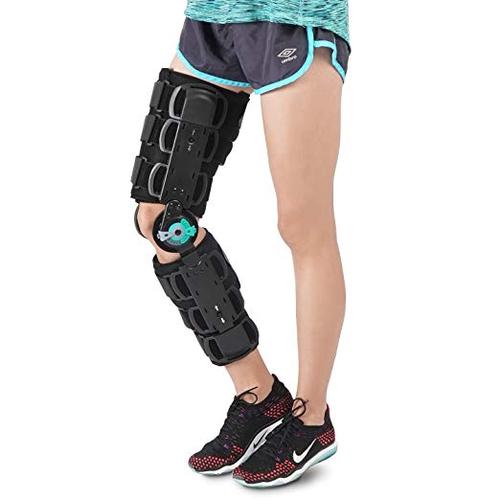
Acl Post Op Brace: A Comprehensive Guide
After undergoing an ACL (Anterior Cruciate Ligament) reconstruction surgery, the use of a brace is a crucial component of the recovery process. This article aims to provide you with a detailed and multi-dimensional introduction to the ACL post-op brace, covering its purpose, types, benefits, and proper usage.
Purpose of the ACL Post-Op Brace
The primary purpose of the ACL post-op brace is to provide stability and support to the knee joint during the initial stages of recovery. It helps in preventing excessive movement and strain on the reconstructed ACL, allowing it to heal properly. Additionally, the brace can also help in managing pain, reducing swelling, and improving overall knee function.

Types of ACL Post-Op Braces
There are several types of ACL post-op braces available, each designed to cater to different stages of recovery. Here are some of the most common types:
-
Static Braces: These braces provide full immobilization of the knee joint and are typically used during the initial phase of recovery. They are usually worn for a period of 6-8 weeks after surgery.
-
Dynamic Braces: Dynamic braces allow for controlled movement of the knee joint while still providing support. They are commonly used during the intermediate phase of recovery, usually for 6-12 weeks after surgery.
-
Functional Braces: Functional braces offer the highest level of mobility and are generally used during the final phase of recovery. They are suitable for activities such as sports and are often recommended for long-term use.

Benefits of Using an ACL Post-Op Brace
Using an ACL post-op brace offers several benefits, including:
-
Stabilization: The brace helps in stabilizing the knee joint, reducing the risk of reinjury.
-
Pain Management: The brace can help in managing pain and discomfort during the recovery process.
-
Swelling Reduction: By limiting movement, the brace can help in reducing swelling and inflammation.
-
Improved Functionality: As the knee joint heals, the brace can help in regaining strength and flexibility.
Proper Usage of the ACL Post-Op Brace
Proper usage of the ACL post-op brace is essential for optimal recovery. Here are some tips to ensure you are using the brace correctly:
-
Follow the Instructions: Always read and follow the instructions provided by your healthcare professional or the brace manufacturer.
-
Regular Wear: Wear the brace as recommended by your healthcare professional, typically during the day and while engaging in activities that put stress on the knee.
-
Clean and Maintain: Keep the brace clean and dry. Follow the manufacturer’s instructions for cleaning and maintenance.
-
Gradual Increase in Activity: As your knee heals, gradually increase your activity level while still wearing the brace.
Ensure Proper Fit: The brace should fit snugly but not too tightly. It should be comfortable to wear and not restrict blood flow.
Table: Comparison of ACL Post-Op Brace Types
| Brace Type | Immobilization Level | Recovery Stage | Activity Level |
|---|---|---|---|
| Static Brace | Full immobilization | Initial phase | Low |
| Dynamic Brace | Controlled movement | Intermediate phase | Medium |
| Functional Brace | High mobility | Final phase | High |
By following these guidelines and using the ACL post-op brace as directed, you can ensure a smooth and successful recovery from ACL reconstruction surgery.



